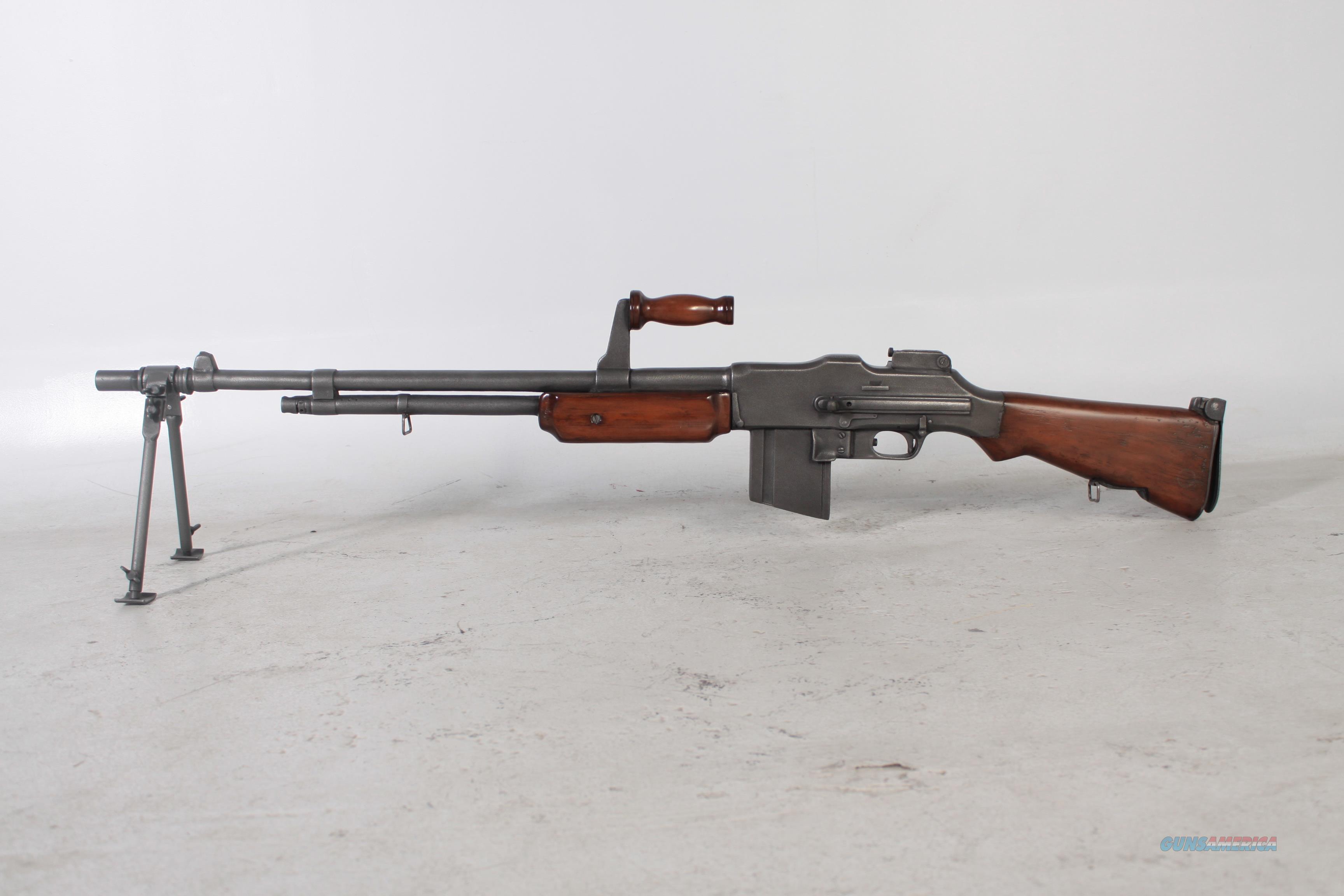

The M1918, the most-used type of the BAR, was a selective-fire, air-cooled, gas-operated automatic rifle. It was produced in record time and approximately 50,000 were made before the war came to an end, however they saw limited action.

The BAR was one of the first practical automatic rifles. Browning, son of John Browning, with the Browning Automatic Rifle (BAR) designed by his father, France, 1918. Val Browning inspecting his father’s handiwork. It has an all blued metal finish with a walnut stock, forend and pistol grip plates. It is fitted with a blade front sight with an integral front sight protector and a tangent rear sight, similar to the Lyman/Thompson SMG sight, that is graduated 2-6 (200-600). The raised area behind the ejection port is marked “COLT/MONITOR”. Typically, the top of the receiver will be marked: “COLT AUTOMATIC MACHINE RIFLE/MODEL R 80 CAL.30/BROWNING PAT FEB. empty, the Monitor had a rate of fire of approximately 500 rpm. It was an evolved version of the B.A.R., but it was still a beast. Cutts compensator made by Lyman.Ĭyclic rate of fire was about 550 rounds per minute and the Cutts Compensator eliminated much of the recoil of the 30-06 Springfield round when fired on full-auto. Intended for use as a true shoulder-fired automatic rifle, the Colt Monitor eliminated the bipod and mounted a pistol grip and buttstock to the lightweight receiver. attempted to address these shortcomings and introduced the Monitor Automatic Machine Rifle (R 80). However, they still proved to be a bit heavy and, for the most part, unwieldy.Ĭolt Monitor from a book by J.T. Some attempts were made to make the BAR more ergonomic such as adding a pistol grip, larger forend, and finned barrel. Spare ammunition, bipods, barrels, and other parts were intended to be carried via horses. Originally developed when mounted cavalry was still a thing, the BAR was heavy, with some variants weighing over 20 pounds.
#Browning automatic rifle sale portable
The US Army began phasing out the BAR in the late 1950s when it was intended to be replaced by a squad automatic weapon (SAW) variant of the M14 and was without a portable light machine gun until the introduction of the M60 machine gun in 1957. The BAR saw extensive service in both World War II and the Korean War and even saw limited service in the Vietnam War. Developed in 1918 it saw limited use in WW 1 and became standard issue to the US Army in 1938 as a portable light machine gun. One of the most iconic infantry weapons of the early 20th century was the Browning Automatic Rifle. 22 rifle for serious small game hunting, as well as training and plinking, and because of its innovative takedown design it also doubles as a survival rifle that's easy to take anywhere.This Colt Monitor is shouldered by Ian McCollum of Forgotten Weapons – like the one from the show, except he really is gonna shoot it. The tubular magazine is loaded through a port in the side of the stock, and unloaded by removing the follower tube from the buttstock. Once the barrel is removed, the trigger assembly can be slid out for cleaning and lubrication. The Browning SA-22 Semi-Auto Rimfire Rifle breaks down just in front of the receiver without tools by turning a knurled barrel nut for convenient transport and storage. A gloss finished, checked walnut stock and forearm accentuates the SA-22's fine lines, while bringing out the beauty of the walnut and protecting it from the elements. The barrel also has a high polished blued finish, comes with a folding rear sight and a brass bead front sight, and is drilled and tapped for scope mounts. The receiver on the Grade I model is scroll engraved and has a high polished blued finish. The SA-22's receiver is machined from solid steel, and ejects cases out the bottom making it naturally ambidextrous. 22 rifle with extremely innovative features. Browning's last designs, the Browning SA-22 Semi-Auto Rimfire Rifle has stood the test of time, providing shooters with a slim, lightweight, ultra-reliable, takedown.


 0 kommentar(er)
0 kommentar(er)
